Cheese is a versatile, flavorful ingredient used in countless dishes around the world. From the creamy richness of brie to the sharp bite of cheddar, cheese can enhance a variety of meals, adding depth, texture, and complex flavors. Each type of cheese has unique characteristics, a distinct place of origin, and a flavor profile that makes it perfect for specific dishes.
In this article, we’ll explore some of the most common types of cheese, how they’re used in cooking, their key characteristics, where they come from, and what their flavor profiles are.
Cheddar
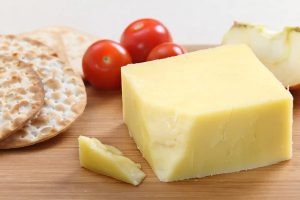 Origin: England
Origin: England
Key Characteristics:
Cheddar is a firm, cow’s milk cheese that ranges in flavor from mild to sharp, depending on its aging process. It’s typically pale yellow or white, though in some cases, it’s colored with annatto to give it a deeper orange hue. Cheddar can be aged anywhere from a few months to several years, with longer aging periods resulting in a sharper flavor and a crumblier texture.
Flavor Profile:
Mild cheddar has a creamy, buttery flavor, while sharp cheddar has a stronger, more pungent taste with hints of nuttiness.
Uses in Cooking:
•Grated over baked dishes like mac and cheese or casseroles
•Sliced for sandwiches and burgers
•Melted into soups and sauces
•Paired with fruit or crackers on a cheese board
Brie
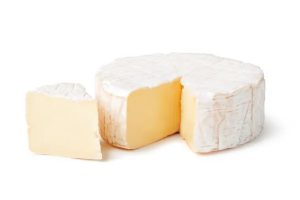 Origin: France
Origin: France
Key Characteristics:
Brie is a soft, creamy cheese made from cow’s milk, characterized by its edible white rind. The interior of brie is smooth and buttery, while the rind has a slightly earthy flavor. It’s typically enjoyed at room temperature for maximum creaminess.
Flavor Profile:
Brie has a mild, buttery taste with subtle earthy and mushroom-like undertones. As it ages, the flavor becomes more robust and pungent.
Uses in Cooking:
•Baked in puff pastry for baked brie appetizers
•Served with fruit, nuts, and honey on a cheese platter
•Spread on bread or crackers
•Added to sandwiches and grilled cheese
Mozzarella
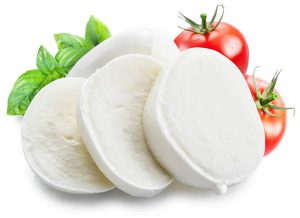 Origin: Italy
Origin: Italy
Key Characteristics:
Mozzarella is a soft, fresh cheese traditionally made from water buffalo milk, though cow’s milk is commonly used today. It has a high moisture content and is typically sold as fresh mozzarella in balls or blocks. It’s known for its mild flavor and stringy texture when melted.
Flavor Profile:
Mozzarella has a delicate, milky flavor that’s fresh and slightly tangy. It’s prized for its stretchy, gooey texture when melted.
Uses in Cooking:
•Topping for pizzas
•Layered in lasagna and baked pasta dishes
•Sliced for caprese salad (paired with tomatoes and basil)
•Melted in sandwiches like paninis or grilled cheese
Parmesan (Parmigiano-Reggiano)
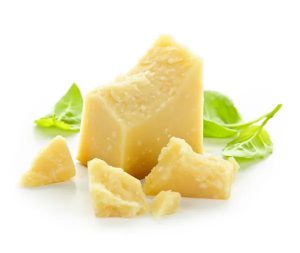 Origin: Italy
Origin: Italy
Key Characteristics:
Parmesan is a hard, aged cheese made from cow’s milk. Authentic Parmigiano-Reggiano is produced in specific regions of Italy under strict regulations. It’s aged for at least 12 months, resulting in a hard, granular texture and a deep, umami flavor. It’s often sold in wedges or grated.
Flavor Profile:
Parmesan has a nutty, savory flavor with a salty tang and a rich umami taste. The longer it ages, the more complex and intense the flavor becomes.
Uses in Cooking:
•Grated over pasta, risotto, and soups
•Shaved onto salads
•Added to breading for chicken or eggplant parmesan
•Used in sauces like Alfredo for a rich, savory flavor
Blue Cheese (Roquefort, Gorgonzola, Stilton)
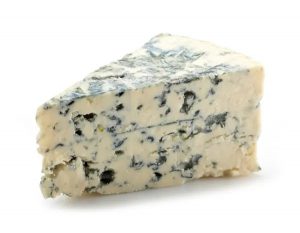 Origin: Various (Roquefort from France, Gorgonzola from Italy, Stilton from England)
Origin: Various (Roquefort from France, Gorgonzola from Italy, Stilton from England)
Key Characteristics:
Blue cheeses are characterized by their blue or green veins, which are created by the introduction of mold cultures during the aging process. These cheeses have a strong aroma and crumbly texture. Roquefort, Gorgonzola, and Stilton are some of the most well-known varieties of blue cheese, each with distinct characteristics depending on the region they’re from.
Flavor Profile:
Blue cheeses have a sharp, tangy flavor with a rich, creamy texture. They can range from mildly earthy to intensely pungent and salty.
Uses in Cooking:
•Crumbled over salads (especially with pears, walnuts, or apples)
•Melted into dressings or dips
•Served on cheese boards with fruits like figs and grapes
•Used in sauces for steaks and burgers
Feta
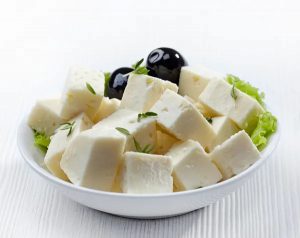 rigin: Greece
rigin: Greece
Key Characteristics:
Feta is a brined, crumbly cheese made from sheep’s milk or a combination of sheep’s and goat’s milk. It has a soft, grainy texture and is sold in blocks or crumbled. Feta is stored in a salty brine, which helps preserve its fresh, tangy flavor.
Flavor Profile:
Feta has a tangy, salty flavor with a creamy yet crumbly texture. Its sharpness varies depending on the length of aging.
Uses in Cooking:
•Crumbled over salads, especially Greek salad
•Used as a filling in pastries like spanakopita
•Added to omelets or scrambled eggs
•Served with olives, tomatoes, and olive oil as part of a mezze platter
Gouda
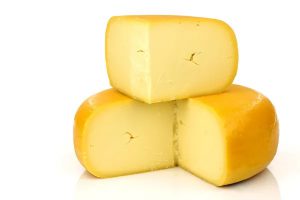 Origin: Netherlands
Origin: Netherlands
Key Characteristics:
Gouda is a semi-hard cheese made from cow’s milk. It has a smooth, creamy texture and a yellow rind. Gouda can be aged from a few months to over a year, with older varieties becoming firmer and more intense in flavor. Young Gouda is soft and mild, while aged Gouda is firm and has a deeper, caramel-like taste.
Flavor Profile:
Young Gouda is mild, creamy, and slightly sweet. Aged Gouda develops a nutty, caramel flavor with a firmer, crumbly texture.
Uses in Cooking:
•Sliced for sandwiches or burgers
•Melted in casseroles or grilled cheese
•Grated over vegetables or potatoes
•Paired with fruits like apples or pears on a cheese platter
Ricotta
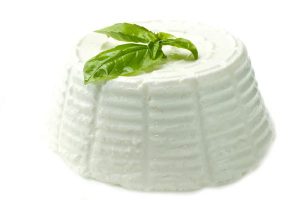 Origin: Italy
Origin: Italy
Key Characteristics:
Ricotta is a fresh, soft cheese made from the whey leftover after making other cheeses like mozzarella or provolone. It has a light, fluffy texture and is often used in both savory and sweet dishes. It’s typically made from cow’s milk, though sheep and goat milk ricotta are also available.
Flavor Profile:
Ricotta has a mild, slightly sweet flavor with a creamy, grainy texture.
Uses in Cooking:
•Filling for lasagna, ravioli, or cannoli
•Spread on toast with honey or fruit
•Mixed into pancake or cake batter for added moisture
•Used in dips or spreads for vegetables or crackers
Gruyère
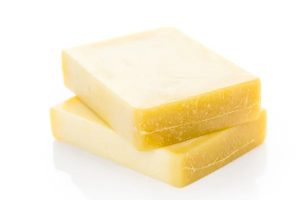 Origin: Switzerland
Origin: Switzerland
Key Characteristics:
Gruyère is a hard, cow’s milk cheese with a smooth texture and a golden-brown rind. It’s aged for several months, which gives it a dense, firm texture and a slightly nutty flavor. Gruyère is known for its excellent melting properties, making it a popular choice for fondues and gratins.
Flavor Profile:
Gruyère has a rich, nutty, and slightly sweet flavor, with hints of fruitiness that develop as it ages. It’s smooth and creamy when melted.
Uses in Cooking:
•Melted in fondues or croque monsieur sandwiches
•Grated over gratins and casseroles
•Used in quiches and French onion soup
•Sliced for cheese boards and sandwiches
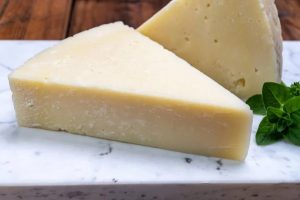 Pecorino Romano
Pecorino Romano
Origin: Italy
Key Characteristics:
Pecorino Romano is a hard, salty cheese made from sheep’s milk. It has a crumbly texture and is typically aged for 8–12 months, giving it a sharp, tangy flavor. It’s often used as a finishing cheese, grated over pasta or vegetables.
Flavor Profile:
Pecorino Romano has a salty, tangy flavor with a sharp bite. It’s slightly more intense than Parmesan and has a crumbly texture.
Uses in Cooking:
•Grated over pasta dishes like cacio e pepe or carbonara
•Sprinkled on roasted vegetables or salads
•Shaved onto soups or risottos
•Used in meatballs or meatloaf for added flavor
Cooking with Cheese
Cheese is one of the most versatile ingredients in the culinary world, offering a wide range of textures, flavors, and uses. Whether you’re melting mozzarella on a pizza, crumbling feta over a salad, or grating Parmesan into a sauce, cheese can elevate any dish with its unique flavor profile. By understanding the characteristics and origins of different cheeses, you can experiment with new ways to incorporate them into your cooking and create delicious, flavorful meals.
Bill Rice is Founder and Co-Publisher of the Family Cookbook Project, the leading online cookbook publisher with a website that helps families and individuals collect, preserve and share food memories by creating their own printed custom cookbooks. He is the author of The Wellfleet Oyster Cookbook and the Cape Cod Cocktail Cookbook (Available on Amazon), both created using FamilyCookbookProject.com. He is also editor of the Donovan Family Cookbook, now it’s third printing and is an avid genealogist tracing his family back to the 1600’s.
Follow Family Cookbook Project on Facebook, Instagram, Twitter TikTok, YouTube and Pinterest!
and their uses in cooking!

